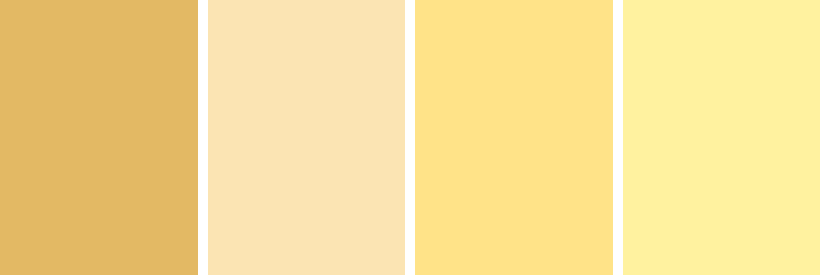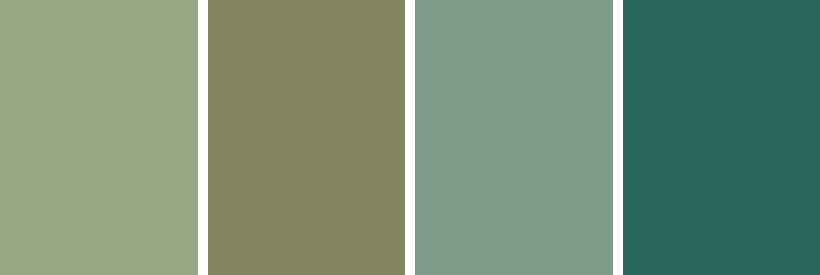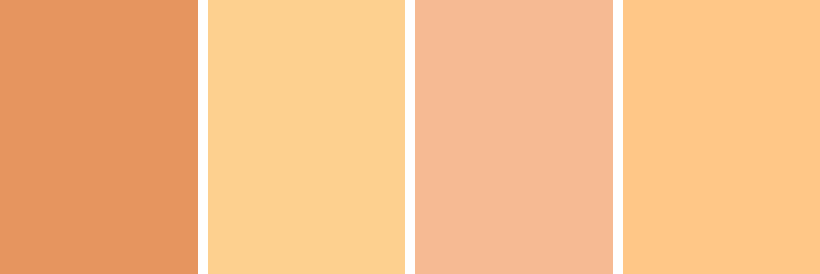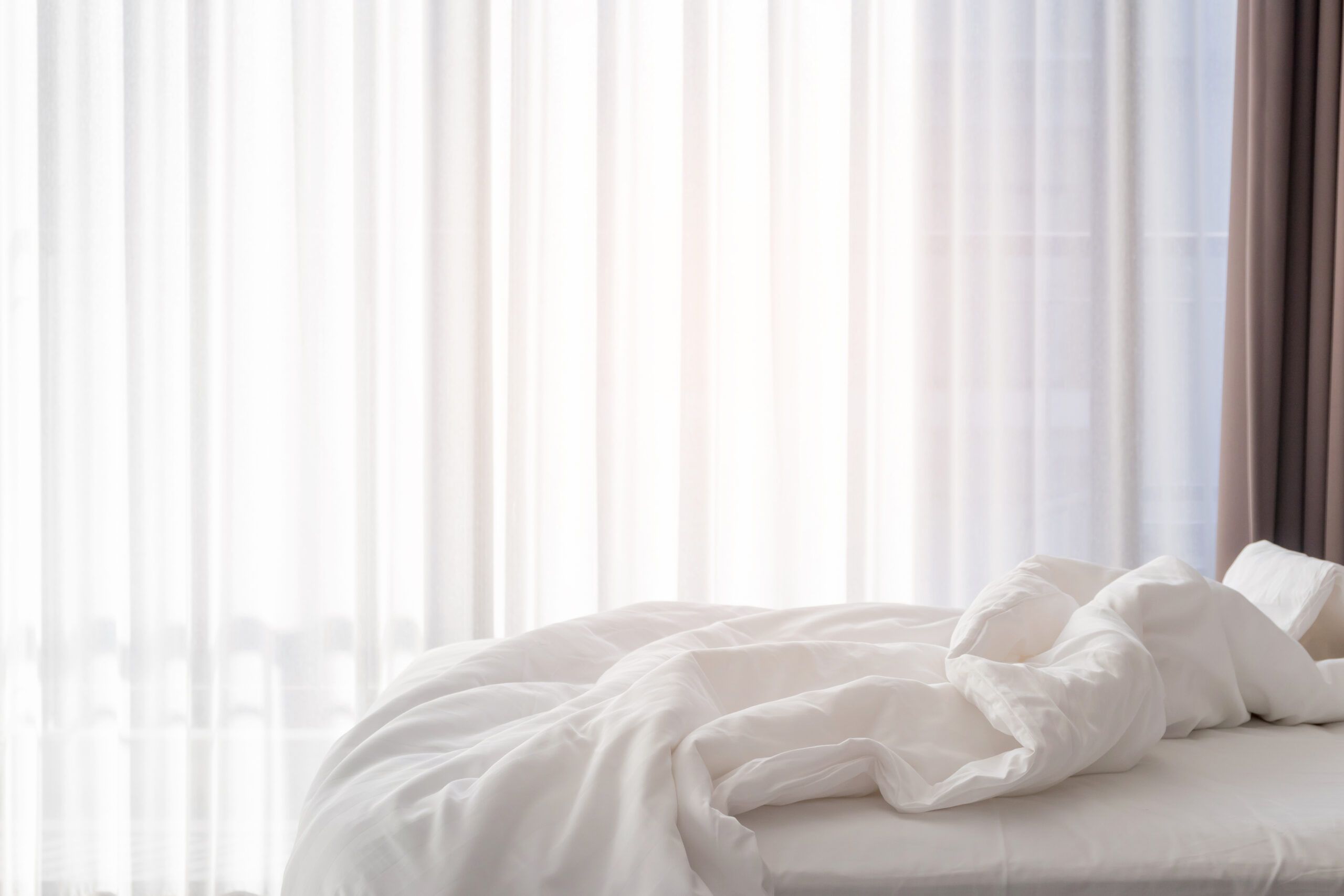If you’re struggling to fall asleep at night, there are a few reasons why your environment may be keeping you from floating off to dreamland. Some are straightforward, like your room temperature, the noise level in your home, and your bed’s comfort level. However, one reason that may surprise you is the color of your bedroom walls. In this guide, we’ll show you the best wall colors for sleep and how to make your room a more sleep-friendly environment.
The Science Behind Color and Sleep
Believe it or not, the shade and intensity of your wall color can affect your mood, energy levels, and overall rest. The relationship between color and sleep may seem like pseudo-science to some, but there’s research that says otherwise. Color can have an impact on our mood, and according to Mental Health America, color psychology can even help improve sleep. While there’s limited research to support color theory, it can be a viable source for mood regulation.
Melatonin, often called the “sleep hormone,” plays a vital role in regulating our sleep cycle. The colors we’re exposed to before bedtime can influence melatonin production, which means that these colors can actually affect our sleep. Cooler, calming colors tend to support melatonin release, while bright, stimulating colors may suppress it, making it harder to fall asleep.
For example, according to The National Library of Medicine and a Travelodge survey of hotels in the United Kingdom, a soft shade of blue is the best color for getting a good night’s sleep. Likewise, The Sleep Foundation claims that blue, green, and white are three of the best colors for restful sleep, and red, bright orange, bright yellow, and black are the worst.
Top 5 Wall Colors for Better Sleep
While each person has different preferences and responses to colors, there are a few shades that rise above the rest in terms of their sleep benefits. Here are the top five wall colors that can help improve your sleep quality.
1. Blue: The Ultimate Sleep-Inducing Hue
This calming color is known for its soothing properties and ability to lower heart rate and blood pressure. Blue is often associated with tranquility, making it a perfect choice for bedrooms.

Shown: Celestial, Sherwin-Williams; Deep Sea, Valspar; Angelic Blue, Behr; Lucerne, Benjamin Moore
2. Gray: A Soothing Neutral Choice
Gray‘s versatility compliments all kinds of decor styles while maintaining a calm atmosphere for rest. You can even pair gray with other accent colors to create a balanced and sophisticated look.

Shown: Pencil Sketch, Behr; Rock Candy, Sherwin-Williams; Elephant Gray, Valspar; Metallic Silver, Benjamin Moore
3. Yellow: Soft Warmth for Restful Nights
While bright yellows can be stimulating, softer, muted yellows can create a warm, cozy atmosphere that encourages relaxation. These gentle tones can help you wind down after a long day.

Shown: Butterscotch Lollipop, Valspar; They Call It Mellow, Sherwin-Williams; Upbeat, Behr; Sundance, Benjamin Moore
4. Green: Nature’s Calming Influence
Green’s association with nature can contribute to a sense of well-being and rest. It can make a room feel fresh and invigorating while still encouraging restful sleep.

Shown: Hillside Grove, Behr; Home on the Range, Benjamin Moore; Parisian Patina, Sherwin-Williams; Northern Hemisphere, Valspar
5. Muted Orange: Unexpected Tranquility
Muted oranges can create a surprisingly calming environment. These warm hues can evoke feelings of comfort and security, promoting a sense of peace as you drift off to sleep. Avoid bright oranges, as these can be stimulating. Instead, opt for subtle oranges like the ones below.

Shown: Outgoing Orange, Sherwin-Williams; Honey Burst, Benjamin Moore; Peach Taffy, Valspar; Mango Tango, Behr
Factors To Consider When Choosing Bedroom Colors
Settling on the right color for your bedroom involves more than just picking a color you like. Consider these additional factors before you redesign your room for better sleep.
Room Size and Natural Light
The size of your bedroom and the amount of natural light it gets can influence how a color feels in the space. Lighter shades can make small rooms feel more spacious, while darker hues can create a cozy atmosphere in larger rooms. Consider how your paint color will look at different times of day and under various lighting conditions before painting the whole room.
Colors To Avoid for a Good Night’s Sleep
While certain colors can promote better sleep, others may have the opposite effect. Identifying and avoiding these colors can help ensure a restful bedroom atmosphere.
Stimulating Shades That Disrupt Rest
Colors to avoid in the bedroom include:
- Bright red
- Pure white
- Neon shades
- Deep purple
- Intense orange
These colors can be overly stimulating and may interfere with your ability to relax and fall asleep.
Blue Light
Electronics emit blue light from their screens, which can make a big difference in terms of sleep quality and duration. Many people stay glued to their phones until they go to sleep, but blue light is known to increase alertness, which can prevent you from resting.
No matter what color you paint your walls, the blue light from your phone, laptop, tablet, and other electronics can work to keep you awake. Consider your bedtime routine in addition to your wall color to better adjust your schedule for deeper, longer sleep.
Why Some Colors Hinder Sleep Quality
Certain colors may disrupt sleep by:
- Increasing heart rate and blood pressure
- Stimulating brain activity
- Suppressing melatonin production
- Creating an energizing rather than calming atmosphere
- Causing eye strain or visual discomfort
Overly stimulating colors can create an environment that feels busy and unsettled rather than one that invites rest and relaxation. To remedy this, fill your room with soothing colors and create a calm, relaxing environment that makes it easy to sleep.

